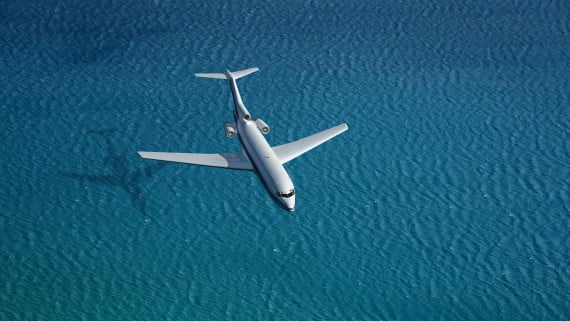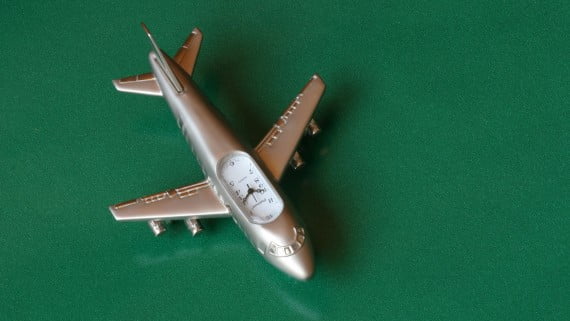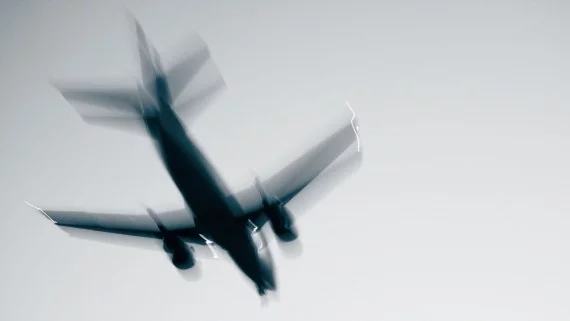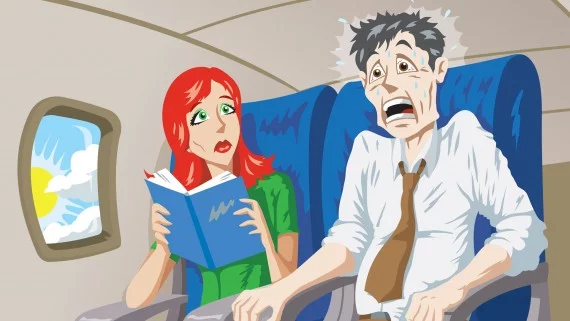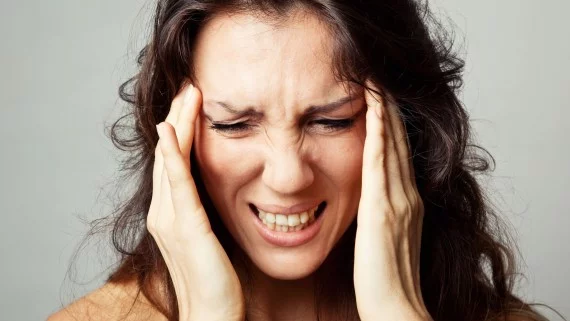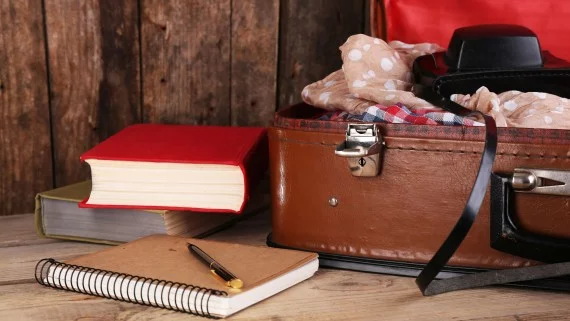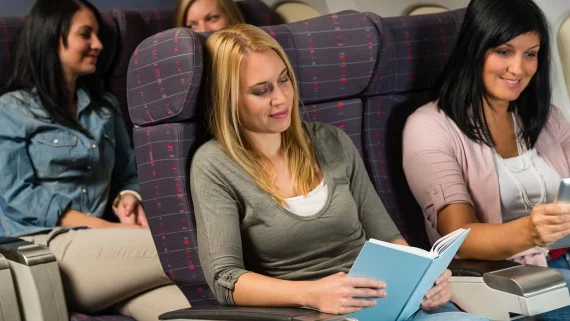The fear of flying, aerophobia or aviophobia is the fear that some people feel of travel by airplane. It is of psychological origin and can be eradicated by following a series of tips, through psychological therapy. In what follows we will show you the causes and types of fear of flying by plane, some techniques to know how to overcome it and the medication that can be taken to minimize the symptoms of this phobia.
Below you have an index with all the points that we are going to deal with in this article.
Article Index
- 1.
- 1.1.
- 1.2.
- 1.3.
- 1.4.
- 1.5.
- 1.6.
- 1.7.
- 1.8.
- 1.9.
- 1.10.
- 2.
- 2.1.
- 2.2.
- 3.
- 4.
- 4.1.
- 4.2.
- 5.
Causes
At present, it is estimated that one in four people fear of flying, of which approximately 13% suffer from true panic and 15% have mild or moderate discomfort when they know they are going to fly
If we had to answer the question of how many people are afraid of flying, the answer would be that almost 30% of people suffer from this phobia on a daily basis. However, the fear of flying is psychological origin and it can be treated with different techniques depending on the intensity with which it is suffered.
In most cases, the fear of flying is not a simple sudden fear generated for no reason, but is the extension of a previous phobia. Therefore, before looking for possible solutions to overcome it, we must find the true psychological origin of aerophobia. The following are the most common causes of fear of flying:
Adverse weather conditions
Rain, wind, storm, fog, ashes of a active volcano and other atmospheric phenomena are the main causes of aerophobia in a high percentage of air passengers, especially because they fear that this could cause a plane crash.
Since storms, snow, heavy rains and, in general, negative weather conditions tend to happen more frequently in winter, There are passengers who directly fear flying at this time of year.
Hydrophobia or aquaphobia
It is an irrational fear of water or swimming. When a person knows that the plane or helicopter is going to fly over the sea, suffers from aquaphobia, because he fears that the plane will suffer some mishap and fall into the sea.
However, every passenger must take into account the amount of rescue and safety resources available to every aircraft, including life jackets.
Fly for the first time
Many people avoid flying throughout their lives precisely because they suffer from aerophobia. Others, on the other hand, cannot avoid it for work or study reasons, among others.
For these people, the first time can be really terrifying, mainly because they do not know what they are going to face and fear that any of the causes mentioned above will occur: turbulence, storms, strong winds ...
Acrophobia or vertigo
This fear translates as fear of heights and generates anxiety in those who suffer from it. Acrophobia is generated by insecurity and fear when imagining the possibility of falling yourself or even a third party if you travel with someone.
People who suffer from this phobia find themselves unable to practice extreme sports such as parachuting or paragliding, but, in addition, travel by airplane it is another of their worst enemies.
Night flights
People who suffer from this insecurity are often those who suffer from Nichtophobia, that is, fear of the dark or the night.
This group is afraid of flying at night or even in heavy fog or clouds, because they believe that the worse the visibility conditions, the greater the risk of an accident.
However, flying without visual references is something that has always existed, since there are countries with very few hours of light, for example. There are highly advanced navigation procedures, systems and standards that allow you to fly at night with all the safety of a daytime flight.
Long-duration flights
Fear of long flights or transoceanic is possibly the result of adding all the previous causes; the thought of a person suffering from aerophobia because they are going to experience a long duration flight is: the longer it lasts, the greater the risk of a problem occurring.
In these cases, the comfort plays a fundamental role, so make the right decision when it comes to choose a seat on the plane it can be very beneficial.
Fly unaccompanied
The presence of a companion, be it the partner, a friend or a family member can be highly comforting for those who fear travel by airplane or feel uncomfortable about it.
Having someone by the side to help us relax and with whom we can to converse During the duration of the flight, it can make us forget any fear and even make us vent.
For this reason, those who are forced to travel alone feel really uncomfortable because they have no one by their side to share their concerns. In these cases, it would be advisable to inform the crew personnel.
Take off and landing
The moments in which the plane takes off and lands are key moments during any airplane trip, because that is when everything begins and when it ends.
Especially during take-off, all passengers experience a certain sensation of shock because the plane needs to reach a lot of speed in order to take off. Lean well on the armrest and, above all, chill out could work in these cases.
To help you overcome your aerophobia in case of what causes it is either the moment of takeoff or the moment of landing, we recommend you watch this video where a professional pilot explains step by step all the safety measures that are carried out before starting either of these two processes:
Claustrophobia
This common phobia is nothing other than the fear of closed spaces. This fear, in turn, may well be caused by fear of only being able to do restricted movements or fear that oxygen may be lacking within the space in which we find ourselves.
The plane is a closed place where a large number of people gather inside and, in addition, the seats are narrow. All this generates claustrophobia for those who suffer from it.
turbulence
Many people are afraid of turbulence during the flight, either because they think it will lead to a plane crash or because they fear getting dizzy or suffering an injury.
However, the turbulence that occurs in the vast majority of flights is light or moderate, so they do not pose a danger to those who travel in said plane.
Symptom
The fear of flying generates anxiety y Stress, from which several symptoms are derived, either on a physiological level, on a psychological or cognitive level or on both levels. We list both types of symptoms below.
Physiological symptoms
The physical symptoms that people affected by this phobia usually experience are:
- Muscle spasms
- Trouble breathing
- Heart palpitations
- Chest pain
- Tachycardia
- Tremor
- Abdominal pain
- Gastrointestinal disorders and diarrhea
- sweating
- General discomfort
- Fatigue, nausea, or dizziness
- Chills
- Xerostomia or dry mouth
- Headache
- Blush or paleness
Psychological symptoms
On a mental and emotional level, people who suffer from fear of flying usually show one or more of the symptoms listed below:
- Memory failures
- Decreased reflections or distortion of perception
- Irritability
- Disorientation
- Inability or difficulty thinking, concentrating, or making decisions
- Negativity and pessimism
In addition, at an observable level, people who suffer from aerophobia can reach cry, perform movements that manifest a motor restlessness (scratching, touching the same area of the body, etc.) or even being paralyzed.
Tips
Regardless of the intensity with which one suffers from fear of flying, before taking medication or resorting to more aggressive cures, we recommend that you follow the following tips or tips. By following these simple tricks, you may overcome your fear and don't have to do anything else:
- Analyze the terrain: many people, especially those who are afraid to fly because it is the first time they do it, suffer from aviophobia because they do not know what they are facing. For this reason, learning about the process of air travel, reading statistics or asking opinions of those who have already flown can be very useful and will let you know what to expect.
- Prepare your flight in advance: organise a travel at the last minute it generates anxiety and stress even in those people who do not suffer from aerophobia. Even more so in those who suffer it. Therefore, do not leave the preparations for the last minute, since the fears that cause the fear of flying can be added another related to the lack of an important document or the forgetting of an object necessary for the trip.
- Learn to control anxiety: We have already mentioned previously how anxiety can be controlled: either with self-help books, or with psychological or medicinal help. In any case, knowing the origin of our fear can also be a great help.
- Get comfortable on the planeWearing comfortable clothes and shoes, choosing a good seat, doing something entertaining or talking with the person next to us can increase our comfort levels during the journey and, consequently, relax and make us leave aerophobia on hold.
- Flies frequently: the fear of flying is overcome by flying. It is as simple as that. So, our advice is to fly as often as you can, as you will end up getting used to it and realizing that air travel is the same or even safer than any other means of transport.
Transmission
The fear of flying is of psychological origin and, therefore, should be treated with therapy and with the help of a psychologist if necessary. For milder cases, there are courses offered by the airlines themselves at different prices whose purpose is to help passengers with aerophobia to overcome it. Another option are self-help books, such as the famous Happy flight. How to lose the fear of flying (2002) by Javier del Campo Martín (former Iberia pilot) and Luisa del Campo Martín-Cobos.
Psychological treatment
In the case of requiring psychological treatment, it is possible to resort to techniques such as hypnosis. However, the most recommended method is the cognitive behavioral therapy, through which the patient is gradually exposed to the situation that causes his phobia so that little by little he can control the anxiety that this causes him. In addition, this method teaches highly useful relaxation techniques such as the ones mentioned below:
- Progressive muscle relaxation: the objective is for the patient to become aware of how much tension has been generated in their muscles so that it is gradually eliminated.
- Breathing control exercises: such as the deep breathing technique.
- Thought stop: it is about capturing the negative thoughts that come to the patient's mind one by one and stopping to analyze ourselves in order to end up replacing them with more positive ones.
- Distraction: This technique is the simplest of all, since it consists of finding entertainment for when the moment of anxiety arrives. Read, listen to music, write, etc. they are good entertainments during a flight.
- Laugh: it is simple and is available to everyone. It's as easy as trying to substitute a negative thought for something that is funny or makes us smile.
Medication
Although drugs To overcome aerophobia, they do not eliminate anxiety, but help the passenger to relax, many people are able to cope with a flight thanks to one of these remedies.
In any case, you should always go to the doctor to advise us on what to take taking into account our physiognomy. What you should not do is self-medicate, as this can become counterproductive and increase our fear.
Here are the five most common homeopathic drugs and treatments to overcome the fear of flying:
- Hypnotics
- Anxiolytics, such as alprazolam o diazepam
- Argentum nitricum (silver nitrate)
- Gelsenium (natural remedy based on jasmine)
- Sleeping pills
It is important to always take the proper dosage of any of these drugs or pills, since if we abuse, we can get the opposite effect and increase our anxiety.
Kids
Children can also have aerophobia the first time they fly, basically because it is a new medium, large and that travels very fast and at high altitude. Taking this into account, it is normal for a child to be afraid of this means of transport. However, this fear can be reduced if we help them with these three simple tricks:
- Keep it entertainedBringing toys, a book, or any other entertainment can make them forget about any concerns.
- Anticipate what you will find: If this is the first time he is traveling, then explain what a plane trip is like: describe what an airplane is like, show him videos, children's movies, etc.
- Make him feel safe: if a child perceives fear or anxiety in those who accompany him, then he or she will also feel this discomfort. There is no better way to make them feel comfortable than to show yourself relaxed.
As for babies, body contact calms them, as well as gentle rocking. Another technique so that they do not get nervous is to speak to them in a relaxed and soft tone.
This article has been shared 130 times. We have spent many hours collecting this information. If you liked it, share it, please:



